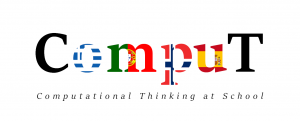Barefoot Algorithms
What are algorithms? An algorithm is a sequence of instructions or a set of rules to get something done. You’ll favour a particular route home from school – you can think of it as an algorithm. There are plenty of alternative routes home, and there’ll be an algorithm to describe each one of those […]
Barefoot Logic
What is logic? Logical reasoning helps us explain why something happens. If you set up two computers in the same way, giving them the same instructions (the program) and the same input, you can pretty much guarantee the same output. This is because computers don’t make things up as they go along or work differently […]
Visit the website by LTEE
Σύνδεσμος Moodle
eTwinning
Categories
Get ideas
1 algorithms
2. pattern
3. logical reasoning
4. abstraction
5. decomposition
6. evaluation
activities
approaches to CompuT
Barefoot.org
BBC
code
computational thinking
creative / systemic thinking
Erasmus
etwinning
games
HelloRuby
LTTA
pattern
resources for teachers
schools
social impact of computation
students
teachers
teacher training
test
Archive
- Σεπτέμβριος 2022
- Ιούνιος 2022
- Μάρτιος 2022
- Δεκέμβριος 2021
- Οκτώβριος 2021
- Ιούνιος 2021
- Μάιος 2021
- Απρίλιος 2021
- Μάρτιος 2021
- Φεβρουάριος 2021
- Ιανουάριος 2021
- Δεκέμβριος 2020
- Νοέμβριος 2020
- Οκτώβριος 2020
- Σεπτέμβριος 2020
- Απρίλιος 2020
- Μάρτιος 2020
- Φεβρουάριος 2020
- Ιανουάριος 2020
- Δεκέμβριος 2019
- Νοέμβριος 2019
- Οκτώβριος 2019
- Σεπτέμβριος 2019




